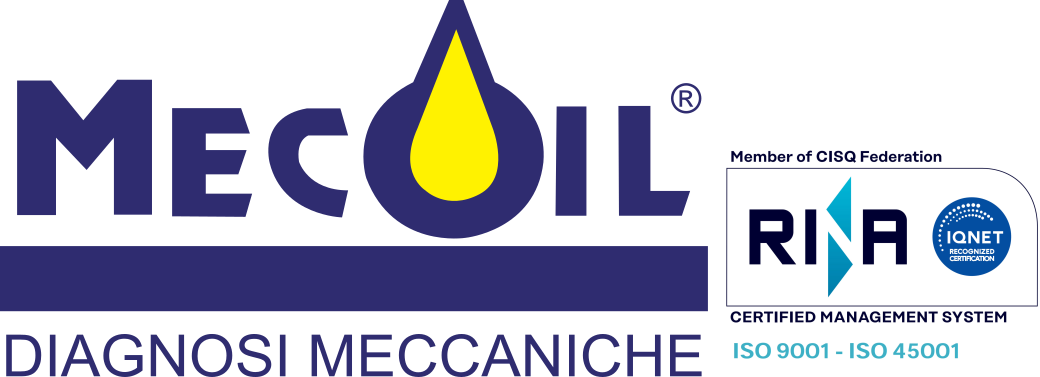Strengths and weaknesses of current systems
In last year’s April issue we started talking about the inherent problems of the “live” study of lubricants in operation within a certain machine system. Now let’s try to make a further contribution on this issue.
For many years we have been trying to carry on the Monitoil® project with a great cultural effort and little commercial outcomes, with all the “ups and downs” that afflict every new instrument of refined investigation whenever it transitions from the laboratory test phase to the practical application in the field. The situation is undoubtedly stimulating; it is a field of research in which very little has been definitively established so far. There are about ten manufacturers of sensors and data integration systems around the world, which tend to operate in a very precise, specific way for certain contexts, but completely autonomously and independently. They range from companies that develop equipment capable of measuring the viscosity (sometimes very high) of food products, so that they canpre-dose in function of the Time (the variable on which the determination of shear stress resistance of a fluid is based) the process of filling jars in a production chain. They are rather complex sensors, installed in lines of a process that “churns out” thousands of pieces per hour of operation, usually connected to robots that sort the packages in special packaging areas. From mayonnaise to tomato paste to anti-wrinkle creams, the process is very similar.
In these cases, the “intrinsic value” of the sensor and the supporting infrastructure is negligible compared to the entire production process. Whatever amount of money is involved, no one has any objection as long as the result meets the Quality and Safety specifications of a given product. The health sector is another example of extensive applications (at “any cost”) of systems capable of capturing the main vital parameters of a living being in real time (and continuously), in order to prevent any extremely critical situation. In general, the focus is on data concerning the cardiac muscle and the circulatory system in general, starting from the assumption that in the modern world the main cause of death (>80%) is linked to cardiovascular problems. But even in these highly evolved contexts, online monitoring is reserved for intensive care areas, discouraging the application of portable diagnostic systems (which can give undoubtedly stimulating results) to citizens that are deemed apparently “healthy”. It is also true that the relationship between effectiveness and efficiency of systems in the health sector is nowadays a topic of great importance, and not only an economic one; we can attain that the areas of intervention to improve current procedures, with the goal of increasing life expectancy, are selected very carefully.
For those of us who work in the industrial world, the recent developments in various technologies linked to the health sector are very interesting, especially in the field of remote diagnostics. The overlapping applications in apparently very different sectors is a source of stimulating prospects; with the appropriate changes, you can translate monitoring activities from the medical world into the evolved industrial world with positive effects.
Let’s get to the heart of the signal analysis issue
We have already examined some of the problems connected to the transition from a “live” situation to the traditional laboratory analyses, somewhat similar to the difference between projecting a film and projecting or scanning its individual frames. These elements, when taken individually, appear much more detailed and incisive, but sometimes (in the absence of dynamic components) they are less useful for diagnostic purposes. Moreover, the analyses of petroleum based products (since the beginning of the various methods surveyed) have been strictly defined with all the necessary steps, in order to avoid any possible subjective “drift”; only this way it has been possible to share from the opposite poles of the industrial world the value in Cst/mg or kg/m3 (Viscosity or Density)
of a certain batch of heavy oil, before boarding it on a super tanker!
It is therefore a matter of facing a great technical leap (with regard to the structures and sensors suitable for the purpose) and above all a methodological leap, in order to mediate between the instances that come from these two “environments” that are so different from one another. One of the most appreciated measures in the world of oleodynamics, equally valued when it comes to the CQ of lubricants at the source, is certainly the one that quantifies the “cleanliness level” of an oil. That is, the search for an internationally shared code able to synthesize with a few numbers/classifications the actual contamination of solid particles suspended in the examined fluid.
The optical particle counters of a few years ago were created by true master craftsmen, interpolating optical techniques with notions of fluid dynamics.
But the problem was how to standardize a result, when faced with a very heterogeneous set of samples of very different origins. The procedure that was developed and shared by most is based on choosing (depending on the ISO/NAS method selected) a certain volume of sample, which is vigorous shaken and then degassed to facilitate the release of the suspended micro bubbles (via ultra sounds).
Otherwise we run the risk of generating false readings by excess, caused by the interference of the myriad of bubbles present. At this juncture, as the bubbles move towards the surface, forming more or less stable foams, the heavier particles (usually of a metallic nature and, as such, very useful for diagnostics) tend to settle downwards, sometimes rendering the search of the prime causes of the failure vain.
This research does not end there; on the contrary, it also stimulates curiosity to investigate in order to improve the current merits and eliminate the flaws (or discrepancies) of online lubricant diagnostics. All of this in an attempt to align the current international standards to the not always linear analytical emergencies obtained so far.
Download the pdf article:
Online diagnostics of lubricants
